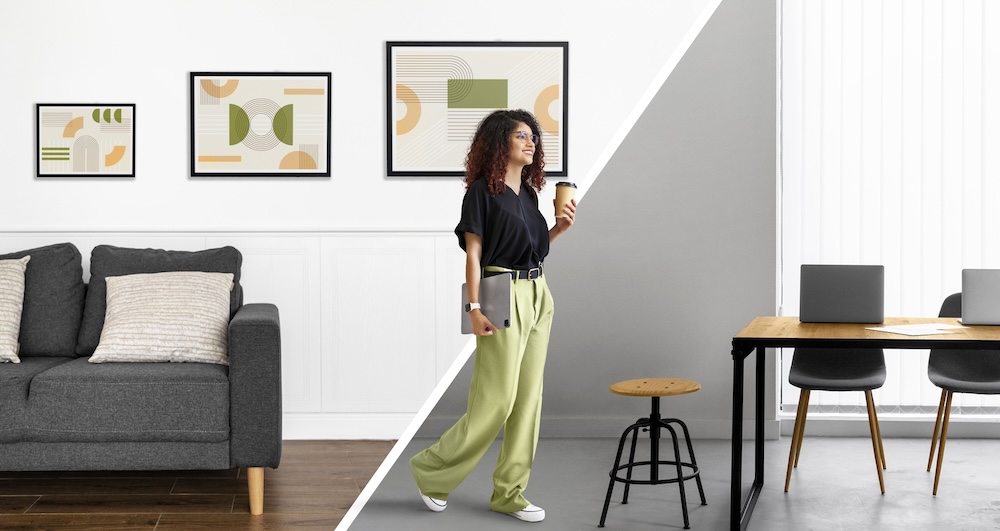The way we live is constantly evolving, and as we enter 2025, several home design and lifestyle trends are reshaping residential spaces. Whether planning to buy, sell, or renovate, staying ahead of these trends can help maximize your home’s appeal and functionality. Here are five key home trends to watch in 2025.
1. Sustainable and Energy-Efficient Homes
Environmental consciousness continues to shape the housing market, with sustainability becoming a top priority for homeowners. Buyers are increasingly looking for energy-efficient homes with features that reduce their carbon footprint and lower utility costs.
What’s Driving This Trend?
- Rising energy costs push homeowners to seek alternative solutions like solar panels and smart thermostats.
- Government incentives for eco-friendly renovations and high-performance insulation encourage sustainable upgrades. Some of these programs are as follows:
- A growing awareness of climate change has led to an increased demand for sustainable materials such as bamboo flooring and recycled countertops.
- Homebuyers are prioritizing properties with lower environmental impact, meaning green-certified homes and energy-efficient designs have a competitive edge in the real estate market.
- The adoption of net-zero homes, which produce as much energy as they consume, is increasing as technology advances and homeowners seek long-term savings.
How to Incorporate It:
- Homeowners can invest in energy-efficient appliances, smart home systems, and high-performance windows to make their homes more sustainable.
- Installing solar panels, energy-efficient HVAC systems, and proper insulation can significantly reduce energy consumption and monthly bills.
- Water-saving fixtures such as low-flow toilets and smart irrigation systems contribute to sustainability and appeal to environmentally conscious buyers.
- Builders and real estate professionals should highlight these features when listing properties, as eco-friendly homes tend to attract buyers willing to pay a premium for sustainability.
- Upgrading to LED lighting, using non-toxic paint, and integrating passive solar design principles can make a home more efficient and appealing without requiring major renovations.
2. Multi-Functional Spaces
With hybrid work models becoming the norm, homeowners are prioritizing adaptable spaces that serve multiple purposes. Rooms that can transition from a home office to a workout space or guest bedroom are in high demand.
What’s Driving This Trend?
- More people are working remotely and need dedicated workspaces that don’t compromise their home’s overall functionality.
- The rise of minimalism and smart storage solutions allows smaller spaces to be used more efficiently.
- A growing preference for experiences over excess possessions encourages flexible layouts.
How to Incorporate It: To make the most of multi-functional spaces, homeowners can use modular furniture, foldable desks, and built-in storage to create dynamic areas that adapt to changing needs. Homebuyers should look for properties with open layouts or rooms that can be easily reconfigured.
3. Smart Home Integration
The integration of smart technology continues to expand, making homes more efficient and convenient. In 2025, smart homes will go beyond basic automation and include AI-driven solutions that enhance daily life.
What’s Driving This Trend?
- AI-powered systems now allow homeowners to optimize energy use, security, and entertainment preferences.
- Voice-activated assistants and smart appliances streamline daily tasks, making home life more efficient.
- Homebuyers, especially millennials and Gen Z, expect properties to come with smart home features as standard.
- Advances in Internet of Things (IoT) technology are creating more interconnected home ecosystems, allowing devices to communicate seamlessly.
- The rise of cybersecurity concerns has led to an increased demand for encrypted smart home networks and biometric security systems.
How to Incorporate It:
- Smart lighting, advanced security systems, and AI-driven climate control systems are must-have features.
- Homeowners should consider installing smart locks, video doorbells, and surveillance systems that provide real-time security updates.
- Automated kitchen appliances, such as smart refrigerators that track grocery inventory and ovens with remote access, are becoming highly desirable.
- Sellers should highlight these upgrades to attract tech-savvy buyers who prioritize convenience and automation.
- Smart window treatments, such as motorized blinds that adjust based on sunlight levels, can enhance comfort and energy efficiency.
- Integrating voice-controlled hubs like Amazon Alexa, Google Home, or Apple HomeKit can make the home more appealing to buyers who value a seamless tech experience.
4. Wellness-Oriented Design
The pandemic accelerated the shift towards wellness-focused living, and in 2025, this trend will continue to dominate home design. Homeowners are looking for ways to create healthier indoor environments that promote physical and mental well-being.
What’s Driving This Trend?
- The need for relaxation spaces has increased, with more people investing in meditation rooms, spa-like bathrooms, and biophilic design elements.
- Indoor air quality concerns have led to a rise in demand for air purification systems and natural ventilation solutions.
- Home gyms, yoga studios, and infrared saunas are becoming sought-after features.
How to Incorporate It: Sellers can enhance their homes’ appeal by incorporating wellness features like circadian lighting, HEPA air filters, and natural materials. Buyers should look for homes with ample natural light, greenery, and dedicated relaxation spaces.
5. Maximalist Interiors
Minimalism has long dominated interior design, but 2025 will see a shift towards maximalism—bold colours, eclectic patterns, and personalized spaces.
What’s Driving This Trend?
- Homeowners are embracing individuality and using their spaces to express their personalities.
- The resurgence of vintage furniture and artisanal decor adds character to homes.
- Colourful palettes, statement wallpaper, and rich textures are making a comeback, offering a contrast to the neutral tones of past years.
How to Incorporate It: Layering textures, mixing bold patterns, and incorporating statement furniture pieces can help achieve a maximalist aesthetic. Homeowners looking to sell should consider staging their homes with warm, inviting elements that make a memorable impression on buyers.
Stay Ahead with These 2025 Home Trends
The home trends of 2025 reflect a shift towards sustainability, functionality, technology, wellness, and self-expression. Whether you’re upgrading your home or preparing to sell, staying ahead of these trends can give you a competitive edge in the real estate market.
Justo’s real estate experts can help buyers and sellers navigate these changes, ensuring they make the most of their investments in this evolving landscape. Contact us today to discover how these home trends can enhance your real estate investment.
- The Impact of Interest Rate Cuts on Toronto’s Housing Affordability - April 23, 2025
- Bank of Canada Holds Interest Rate Steady Amid Tariff Uncertainty - April 19, 2025
- The Impact of Interest Rate Cuts on Toronto’s Housing Affordability - April 11, 2025



